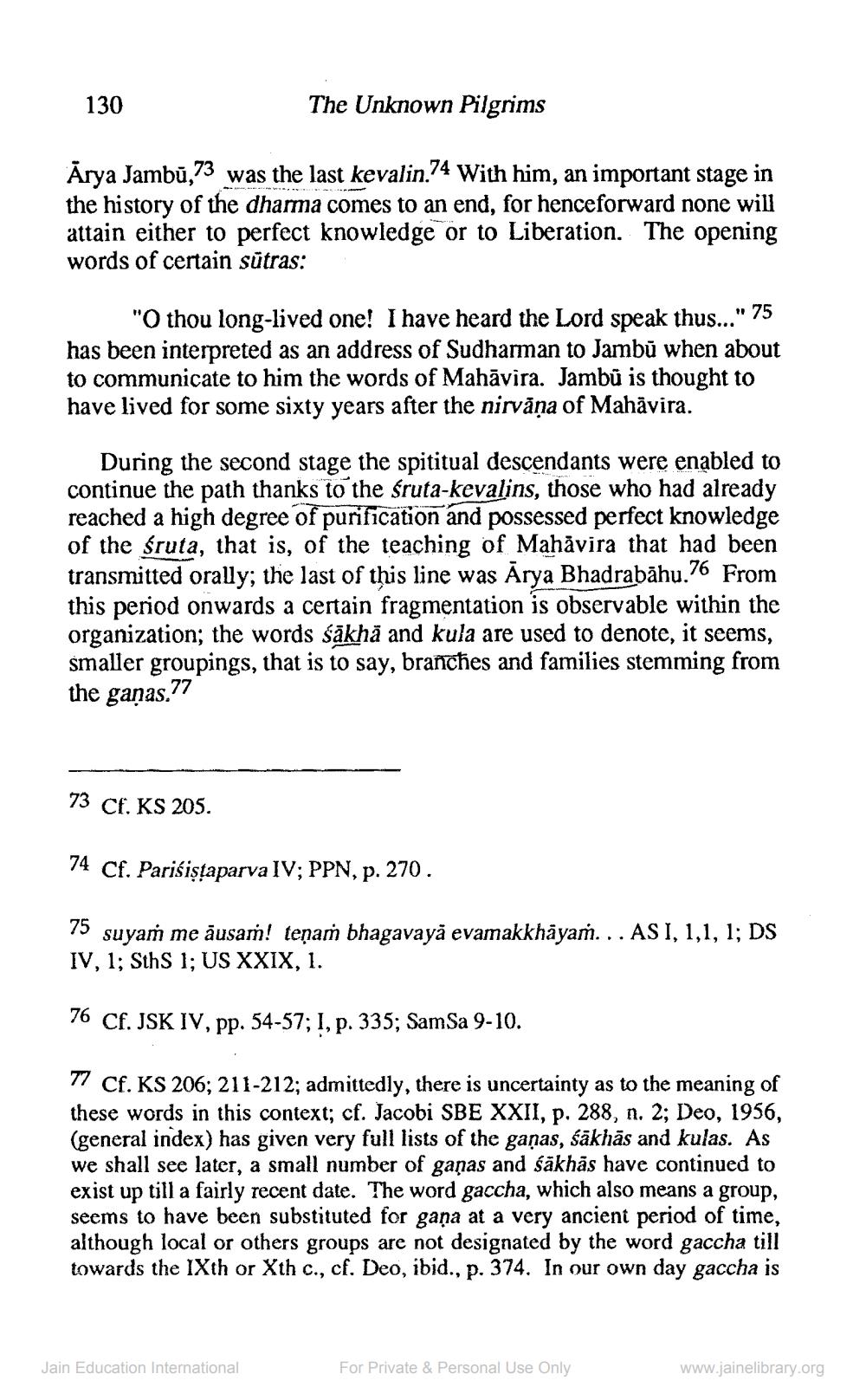________________
130
The Unknown Pilgrims
Arya Jambū,73 was the last kevalin.74 With him, an important stage in the history of the dharma comes to an end, for henceforward none will attain either to perfect knowledge or to Liberation. The opening words of certain sūtras:
"O thou long-lived one! I have heard the Lord speak thus..." 75 has been interpreted as an address of Sudharman to Jambū when about to communicate to him the words of Mahāvira. Jambű is thought to have lived for some sixty years after the nirvāņa of Mahāvira.
During the second stage the spititual descendants were enabled to continue the path thanks to the śruta-kevalins, those who had already reached a high degree of purification and possessed perfect knowledge of the śruta, that is, of the teaching of Mahăvira that had been transmitted orally; the last of this line was Arya Bhadrabāhu.76 From this period onwards a certain fragmentation is observable within the organization; the words sākha and kula are used to denote, it seems, smaller groupings, that is to say, branches and families stemming from the ganas,77
73 Cf. KS 205.
74 Cf. Parisistaparva IV; PPN, p. 270.
75 suyam me āusam! teņam bhagavayā evamakkhāyam. .. ASI, 1,1, 1; DS IV, 1; SthS 1; US XXIX, 1.
76 Cf. JSK IV, pp. 54-57; 1, p. 335; SamSa 9-10.
77 Cf. KS 206; 211-212; admittedly, there is uncertainty as to the meaning of these words in this context; cf. Jacobi SBE XXII, p. 288, n. 2; Deo, 1956, (general index) has given very full lists of the gaņas, sākhās and kulas. As we shall see later, a small number of gaņas and sākhās have continued to exist up till a fairly recent date. The word gaccha, which also means a group, seems to have been substituted for gana at a very ancient period of time, although local or others groups are not designated by the word gaccha till towards the IXth or Xth c., cf. Deo, ibid., p. 374. In our own day gaccha is
Jain Education International
For Private & Personal Use Only
www.jainelibrary.org




